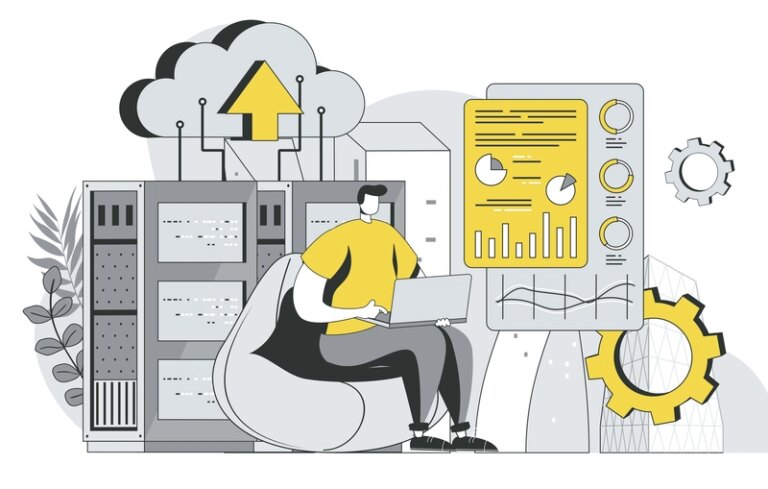Domain Event Pattern for Decoupled Architectures
In modern applications, different parts of a system often need to react to changes without being tightly coupled. For example, when a user registers or an order is placed, several components might need to send notifications, update analytics, or trigger workflows.
The Domain Event Pattern provides a clean solution to this problem by modeling significant business events as immutable facts. It allows systems to communicate through events in a decoupled way, making them more modular, scalable, and easier to maintain.
What is the Domain Event Pattern?
The Domain Event Pattern, a key concept in Domain-Driven Design (DDD), captures significant changes within your business domain as immutable events. A domain event represents a fact that has already occurred - such as “Order Created” or “User Registered” - and includes details like timestamps, unique IDs, and domain data. Because these events are immutable, they preserve the integrity of the system’s history, making it easier to debug and audit.
The key advantage of this pattern is decoupling. When a domain event is raised, the producing code does not need to know who will handle it or how. This separation allows different parts of your application to work independently. It is especially powerful in complex systems or microservice architectures, where services can react to events without direct dependencies on each other.
Key Components of the Domain Event Pattern
Domain Event
A Domain Event represents something that has happened in the past and describes a change in the state of the domain. It must include the date of occurrence, the ID of the aggregate, and a message for subscribers. A domain event must be immutable, and its name should be written in the past to indicate that it has already occurred.
Event Publisher
The Event Publisher is responsible for broadcasting domain events. It decouples the producer, such as an order service, from consumers who might act on those events. These events can be published either synchronously or asynchronously, depending on your requirements.
Event Consumers / Handlers
Event Consumers or Handlers are components that react to domain events. For example, when an order is placed, one consumer might send a confirmation email, while another triggers a system notification.
Messaging System (Optional)
In distributed systems, a Messaging System can be introduced to carry domain events across service boundaries. Tools like Kafka or RabbitMQ are commonly used to facilitate cross-service communication, allowing different microservices to subscribe to and react to events independently.
Benefits of Domain Events
Loose Coupling: Producers and consumers do not need to know about each other, which reduces dependencies and makes your system easier to maintain and evolve.
Scalability: Asynchronous event handling enables the application to execute multiple operations concurrently, optimizing system resource utilization and improving both throughput and responsiveness.
Extensibility: Adding new event handlers becomes straightforward without altering existing code that produces events. This allows your system to adapt quickly to new requirements.
Traceability: Domain events leave a clear audit trail in your system. This means you always know what happened and when, making debugging and auditing much simpler.
Implementation Example
Now, a simple example of the Domain Event Pattern shows how all the pieces fit together to build a clean and decoupled system.
OrderMessage
We’ll start with a class called OrderMessage. It’s a container for order information, like ID, current status, and other relevant details. It also makes it easy to convert an Order object into an OrderMessage, allowing us to share order changes with other parts of the system.
public record OrderMessage(UUID orderId, Status status) {
public static OrderMessage message(Order order) {
return new OrderMessage(
order.orderId(),
order.status()
....
);
}
}
OrderCreated
Next up is OrderCreated, which represents our domain event. Imagine it as a notification about the newly created order so other components in the system can react appropriately. This class keeps track of a unique event ID, the order details using OrderMessage, and a timestamp indicating when the event occurred. A factory method is also provided to make the creation of these events straightforward and clean.
public record OrderCreated(UUID id, OrderMessage message, Instant occurred) implements DomainEvent {
public static OrderCreated create(UUID id,
OrderMessage message,
Instant occurred) {
return new OrderCreated(
id,
message,
occurred
);
}
}
Order
Now let’s take a look at the core domain object: the Order. It acts as an aggregate root that encapsulates business logic and key information. Any change to its status may represent a domain event, which must be propagated to other bounded contexts and external systems.
public class Order {
private UUID orderId;
private Status status;
private Order(UUID orderId,
Status status) {
this.orderId = orderId;
this.status = status;
}
public static Order create(final UUID orderId,
final Status status) {
return new Order(
orderId,
status
);
}
....
}
OrderServiceImpl
Finally, we have the OrderServiceImpl class, which handles the creation of orders in the system. This is where the Domain Event Pattern demonstrates its effectiveness.
In the createOrder method, when a new order is created, we immediately generate an OrderCreated event populated with the order’s details and the current timestamp. Instead of acting directly on this event (such as sending notifications or updating analytics), we delegate it to a MessagePublisher.
This approach clearly illustrates the advantages of decoupling. The service responsible for creating the order does not need to know what actions will follow. It simply raises the event and proceeds, leaving it to other components of the system to determine how to handle it.
public class OrderServiceImpl implements OrderService {
private final MessagePublisher messagePublisher;
public OrderServiceImpl(MessagePublisher messagePublisher) {
this.messagePublisher = messagePublisher;
}
@Override
public void createOrder(Order order) {
OrderCreated orderCreated = OrderCreated.create(
order.orderId(),
OrderMessage.message(order),
Instant.now()
);
messagePublisher.publisher(orderCreated);
}
}
Conclusion
The Domain Event Pattern provides a clean and efficient way to design systems that are extensible, scalable, and easy to maintain. It’s especially powerful in complex domains or microservice architectures where changes in one part of the system need to trigger actions in another.
By capturing business events as immutable facts, you enable a richer, more auditable, and more modular architecture. This pattern helps you build software that’s not only robust today but also ready to evolve with future requirements.
Additional Resources
For a step-by-step video walkthrough of this example and further explanation of the pattern in action, watch the full tutorial:
🟥▶️https://www.youtube.com/watch?v=fbk2xL3vgNI&t
Remember, real speed doesn’t come from rushing. It comes from doing things right. As Robert C. Martin said, “The only way to go fast, is to go well.”
References
- Evans, E. Domain-Driven Design: Tackling Complexity in the Heart of Software. Addison-Wesley, 2003.
- Vernon, V. Implementing Domain-Driven Design. Addison-Wesley, 2013


